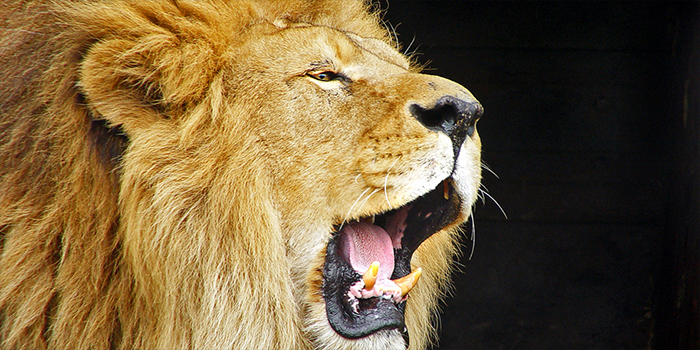
The term “intensity” is one of the most misunderstood in all of fitness, with various definitions given depending on the speaker. In the world of bodybuilding especially, every client I've ever worked with describes his or her training as “intense.” At the same time, these clients also come to Mountain Dog for physique improvement, which leads me to question how exactly they conceptualize training intensity. Before I get ahead of myself though, I want to create appropriate context and proper relevance for the term “intensity” and then we can apply it to bodybuilding.
Intensity, The Textbook Definition
The term intensity originates from the training of Olympic lifting, classically known as weightlifting, and was specifically defined with a clear denotative (meaning dictionary or purely empirical) definition.
Intensity equals the percentage of the weight being lifted relative to the one-rep maximum that a trainee is capable of performing. Relative to the practice of programming, Olympic lifting, strength and conditioning and powerlifting, that’s the proper definition of intensity. This definition can be found in various textbooks, and this “percentage of 1RM,” as it's often written, is what is being applied to such programming schemes like 3X 5 at 80 percent or 3 X 1 at 92 percent.
Why am I making the point of defining this? Because most coaches or wannabe strength coaches and personal trainers don’t actually know the textbook definition. This makes any discussion of training intensity a setup for intense confusion and semantic arguments because the terminology being thrown around is understood differently by everyone. Now, with that context established, I’d like to define what intensity means in the sphere of bodybuilding.
Intensity, the bodybuilding definition
Going back to the original scenario, almost every client I've worked with or consulted with at Mountain Dog always describes his or her training as “intense.” At the same time, I also encounter two very common errors when people answer our questions regarding what training “intensity” means. The first is something along the lines of “I always train really hard and push the weight,” and the second is “I always train really hard with sets and reps.”
Now, neither of these answers are “wrong. I'll say that right away, but it isn't “right” either in that this is a very incomplete picture. This definition arises because the vast majority of trainees are trapped into a thinking fallacy that I call the “linear progression trap.” What does this mean? Simply that they assume muscle growth is driven purely by more reps, more weight or more sets, and they can expect that these must just keep going up and up and up. Otherwise, they aren't making “progress.”
To preface further, I'm not implying that progressive overload is a false principle. Rather, the “intensity” applied to get there is misguided and uninformed.
What else is there besides weight and reps?
Rather than let people think that I'm making shit up, I’ll put forth Dr. Fred Hatfield's factors of intensity in bodybuilding. Anyone who’s been in the “game” a while should recognize these even if they’ve never seen them formally listed.
Bodybuilding intensity:
- Amplification of mental effort (getting “psyched” or “in the zone”)
- Increased excitability and training enthusiasm (training “passion” or “drive”)
- Addition of reps
- Addition of weight
- Decreased rest between reps
- Decreased rest between sets
- Increased number of exercises per body part
- Increased total number of exercises or body parts trained in one session
- Increased number of training sessions per day
- Increased speed of movement/execution
- Increased amount of work done at the anaerobic threshold (maximum pain tolerance)
- Increased amount of eccentric work that your muscles are required to perform
So that’s12 factors. Within the larger sphere of hypertrophy and training progression, all of these factors contribute to muscle growth, not just two.
Now, there’s likely to be a question that comes up, which is "Am I supposed to measure and track all of that?" And the answer is no. I'm not suggesting that every variable in training be accounted for. Rather, I list these factors to point out the downfall in the novice mindset that progress is confined solely to weight and reps. The larger issue isn't that training needs to be tracked down to the minute detail but the perception of training and what constitutes progress.
Progress can be assessed many ways. To use a reversal of the list so to speak, all the following factors would represent a positive progression. These factors aren't necessarily “measurable” factors in the sense of pure quantification, but they are objective “qualitative” assessments that any trainee of any level can make.
The Iron Lion Factors of Progression (because it's my list and I can call it whatever I want):
- Less mental intensity is needed by the trainee to perform the same volume of work.
- The trainee is experiencing positive training “momentum” through repeated quality workouts.
- Weights that previously were perceived as “heavy” can now be done for higher repetitions and require less effort to move.
- General training weights have increased across most compound exercises.
- Overall repetitions have increased across most isolation exercises.
- Less rest is needed between sets to perform the same level of effort.
- More exercises are needed to create adequate stimulus for a muscle group.
- The usage of supersets, trisets or giant sets has been increased within a session.
- Intensification techniques such as partials, rest pause, static holds, iso-holds and strip sets may be utilized when appropriate.
- Work capacity has increased so that twice daily training is a possibility.
- Rate of perceived exertion has declined, allowing weights to be moved with greater speed/velocity.
- The anaerobic threshold has increased, allowing the trainee to push his pain tolerance to greater levels.
- Muscular strength has progressed so that eccentric control of a weight is a possible emphasis that can spur further growth.
From a trainer perspective, I would never throw this list at a client and tell him to “assess this.” I generally will introduce one factor at a time, usually perceived intensity of effort. If a workout is easier, even if the weights and reps and sets are all exactly the same, progress is happening. These are markers of intensity as well as awareness of the training experience.
From a physiological perspective, this list also illustrates that improvement is made over time (that damn thing I always talk about) on a long-term continuum. There are inherent biological restrictions to progress being constantly linear. Muscle tissue needs to repair and grow, and connective tissue needs to catch up. Mitochondria production improves only so much so fast, and strength takes submaximal practice for the nervous system.
MORE Applying Bodybuilding Science to Create a Genetic Freak
From the mentality aspect, an advanced trainee will likely see that most of these factors are in fact intuitive markers that he already incorporates into his training. And this begets a certain point as well.
"Not everything that you can measure matters, and not everything that matters can be measured" (credit goes to Amir Siddiqui for the quote). Intensity in bodybuilding and how to progress yourself goes hand in hand with the training instinct that you develop over your time spent in the gym. The “under the bar” experience is what shapes the understanding and application of progression more than anything else, and this becomes part of the training philosophy that’s created over time, as Dave Tate talks about in detail.
Whether you're in year one of training or year 20, greater levels of awareness will create more opportunity to learn and improve your training. You’ll know when to up the intensity in certain ways and back it down in others (or hopefully, your trainer/coach will). And if nothing else, you won't be so upset when you can't add reps or weight. Give it time.
Images courtesy of Jeffrey Sygo at www.symiphotography.com














1 Comment